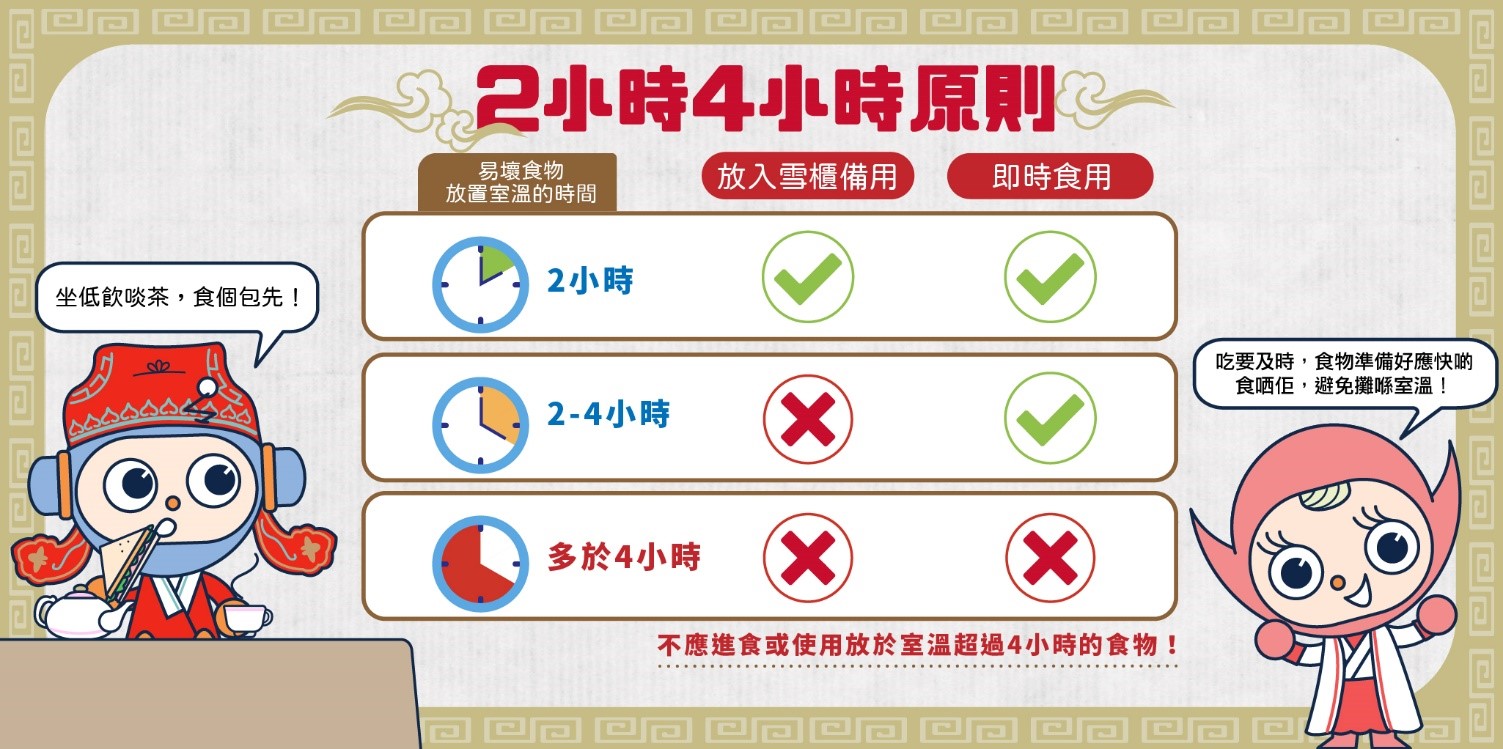
Feature Article
Allergic to Undercooked Meat? A Look into Food Allergy, Food Intolerance and Food Poisoning
The Centre for Food Safety (CFS) has conducted a study to evaluate food handlers' knowledge, attitudes and practices regarding the preparation of beef burgers and compiled the Trade Guidelines on Safe Preparation of Beef Burgers. Some interviewed food handlers thought that the reason why customers fell sick after eating the undercooked burger patties they prepared was that they might have an allergic reaction rather than a foodborne disease (i.e. food poisoning). Some handlers believed that burger patties made from expensive beef, like wagyu beef, could be eaten raw or lightly cooked. This article dispels such myths and explains why microorganisms in meat (especially the mince) that might cause food poisoning can only be killed after thorough cooking.
Food Allergy and Food Intolerance
Food allergy is an unusual immune system reaction that occurs rapidly after eating certain foods. The immune system can protect a person against pathogens; but in the case of food allergy, it misinterprets certain foods as dangerous. Even minimal allergen exposure may result in unpleasant symptoms such as vomiting, stomach discomfort, hives or swollen airways within minutes to an hour after eating. Anaphylaxis is a severe immunological reaction that sends a person into shock. Common food allergens include milk, eggs, peanuts, tree nuts, soy, wheat, seafood and shellfish. While avoiding the food allergens is the primary way to prevent an allergic reaction, getting the correct information by, for examples, reading the allergen labels, helps make safe food choices.
Food intolerance is a less serious condition. Problems are usually confined to the digestive system instead of the immune system. For instance, lactose (milk sugar) intolerance is a digestive disorder caused by the deficiency of lactase, an enzyme that digests lactose. A person with lactose intolerance is unable to digest lactose. The bacteria in his/her gut then break down the lactose, causing bloating, stomach discomfort and diarrhoea. People with food intolerance may be able to have trace quantities of the offending food without any problem. They can avoid unpleasant responses by watching out for what they eat. Lactose-free milk or plant-based milk alternatives, for example, may be suitable for a lactose intolerant person.
Food Poisoning
While not all people have food allergies or intolerances, they are at risk of food poisoning if they have consumed food contaminated with bacteria, viruses, parasites or chemicals (Figure 1). Harmful bacteria or their toxins can contaminate food at any stage of food production, particularly if the food is handled or cooked improperly. Common symptoms of food poisoning include abdominal pain, diarrhoea, nausea and vomiting, which can last from hours to days depending on the causative agent. Individuals who are vulnerable, such as the elderly, infants and young children, pregnant women and immunocompromised people, may have severe sequalae and even life-threatening conditions. Bacterial contamination is the most common cause of food poisoning in Hong Kong. In 2021, the three most prevalent contributing factors to food poisoning in local food premises were contamination of cooked food by raw food, consumption of raw food and inadequate cooking. To effectively reduce microbiological threats, cook meat, poultry, fish and eggs to an internal temperature of at least 75℃ before consumption.
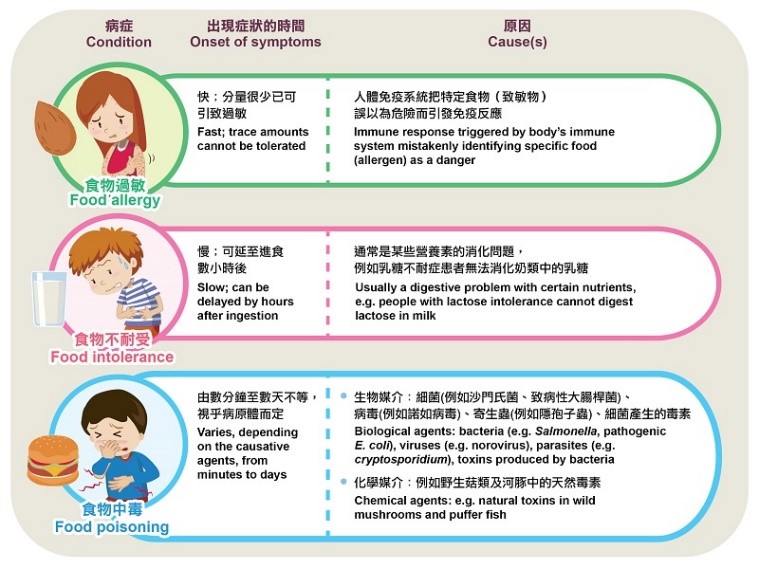
Figure 1: Differences between food allergy, food intolerance and food poisoning
Why Burger Patties Should Not be Eaten Raw or Lightly Cooked?
The surface of meat may be contaminated by harmful bacteria such as Salmonella and pathogenic E. coli. during slaughtering and handling. For a steak which is an intact cut of beef, its interior usually does not contain bacteria. Simply searing the surface of the steak can kill the bacteria on the surface. However, when meat is minced to make burger patties, any harmful bacteria present on the surface of the raw meat will spread throughout the patties. Unless the burger patties are cooked right through, the bacteria inside may remain alive after cooking. Since food poisoning organisms are prevalent throughout the food chain, this happens to all burger patties, including those made from good quality or expensive meat.
Food Safety First
Food handlers who mistake food poisoning for food allergy may overlook food safety practices because they are not aware that the adverse conditions of their customers upon eating undercooked burgers are due to bacteria contamination. It is imperative that food handlers should realise the causes of food poisoning and prevent it by adopting food safety practices. To prevent foodborne diseases, one should follow the "5 Keys to Food Safety" when handling food: Choose (choose safe raw materials); Clean (keep hands and utensils clean); Separate (separate raw and cooked food); Cook (cook thoroughly); and Safe Temperature (keep food at safe temperature), which are simple and effective .
Mascot ON in Lesson
Pasteurisation and Food Safety
What is Pasteurisation?
Pasteurisation is a common food preservation technique besides canning and freezing. Used for perishable foods such as milk, eggs and juices, pasteurisation is a heat treatment process that aims at reducing the number of pathogenic microorganisms to a level at which they do not seriously endanger health. It helps maintain the desirable texture of food products such as tiramisu and soft-scrambled eggs.
Named after Louis Pasteur, a scientist who proved in the 1860s that heating wine and beer for a few minutes would prevent spoilage, pasteurisation involves heating food to a specific temperature for a set period of time. It aims at extending the shelf life of food by inactivating non-spore-forming pathogenic bacteria and vegetative cells of spoilage microorganisms, as well as inhibiting enzyme activity.
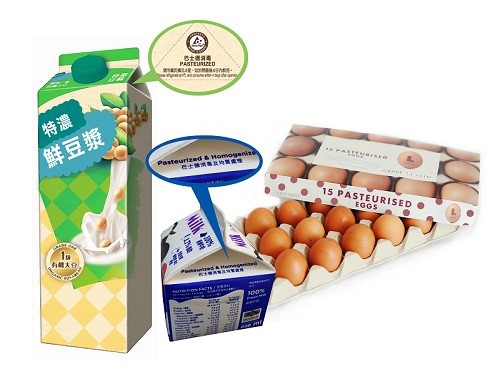
Figure 2: Pasteurised food products commonly available on the market
Various processing time and temperature combinations can be applied for pasteurisation. For example, raw milk can be pasteurised by heating at 63℃ for 30 minutes or at a higher temperature of 72℃ for 15 seconds, and then immediately cooling it to a temperature below 10℃. Pasteurisation systems are developed to achieve a 99.999% reduction of the microbial load by using the most heat-tolerant target pathogen Coxiella burnetii. The higher the temperature applied, the shorter the heat treatment time is required. The pasteurisation time and temperature combinations applied are designed for killing harmful bacteria such as Listeria, Salmonella, Campylobacter and Mycobacterium bovis (a common cause of tuberculosis before the widespread application of pasteurisation in commercial milk production). However, pasteurisation has its limitations. Some spore-forming bacteria like Bacillus may remain active after pasteurization, which may lead to food spoilage or even food poisoning if the pasteurised food is stored under improper conditions.
As pasteurisation involves heat treatment, some may be concerned that such a process would cause nutrient loss. The effects of pasteurisation on different nutrients vary. Take milk as an example, while pasteurisation has little impact on minerals, fat composition and proteins, and no impact on vitamins such as vitamins B1 and B6, it diminishes the amounts of those less heat-stable vitamins like vitamin C.
Pasteurised Ingredients are Safer for Dishes not Thoroughly Cooked
Cooking food thoroughly is essential to eradicate foodborne pathogens. However, certain recipes require ingredients to be treated with lower heat. Pasteurised food is a safer option compared to its raw and untreated equivalents. It is because pasteurisation can reduce the amount of microorganisms in the food while maintaining its texture.
Pasteurised shell eggs, dried egg white powders and liquid eggs are examples of pasteurised egg products that are suitable for making dishes that require the use of undercooked eggs.
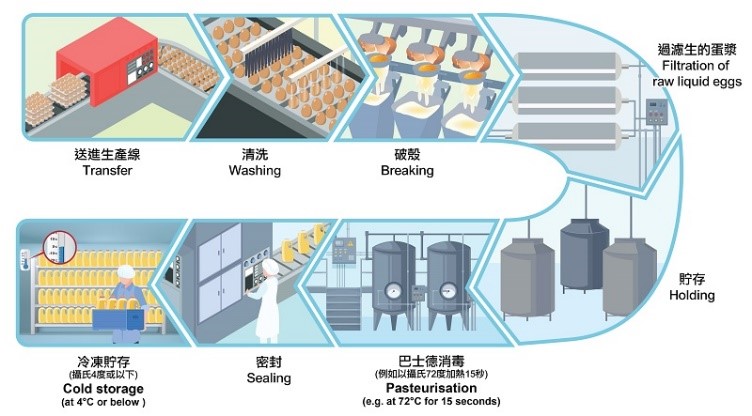
Figure 3: Production flow of pasteurised liquid eggs
Proper Handling of Pasteurised Food to Ensure Food Safety
As pasteurisation cannot kill all bacteria, nor can it destroy spores that may germinate and cause food spoilage or food poisoning, proper storage of pasteurised foods is important. This is why grocery stores usually keep pasteurised foods in the refrigerator. To prevent bacterial growth, pasteurised foods should be stored according to the manufacturer's instructions, such as keeping pasteurised milk, soybean milk, juices and egg products refrigerated at or below 4℃. Check the expiry dates of pasteurised products before use. Once opened, the pasteurised products should be used as soon as possible.
Spot Check
Heat-stable Toxins from Bacillus cereus and Staphylococcus aureus: Why Cooked Food Should Not Be Left at Room Temperature for Too Long
Recently, fried rice samples from a local restaurant were found to contain excessive amounts of Bacillus cereus (B. cereus). While cooking and reheating generally make food safe, subsequent improper handling of cooked food may create opportunities for bacteria like B. cereus and Staphylococcus aureus (S. aureus) to form heat-stable toxins, causing food poisoning. Now let us look at how cooked food allows bacteria to thrive and how we can avoid this from happening.
Health Hazards Posed by Improper Handling of Food after Cooking
B. cereus and S. aureus are widespread in our surroundings and are normally present at low amounts in food, which does not always result in food poisoning. Only by multiplying to high levels can these bacteria produce sufficient toxins in food to make people sick. Mishandling of food after cooking, such as prolonged storage under ambient temperatures, will allow bacteria to grow.
While cooking is effective in killing S. aureus and the vegetative cells of B. cereus, B. cereus can exist as spores which are resistant to normal cooking temperature. These spores can only be eliminated by high-temperature treatment, say at 121℃ for 3 minutes. Paradoxically, the heat from cooking not only facilitates the growth of the spores into vegetative cells, but also creates an environment conducive to cell growth by killing off other competing microorganisms. Similarly, S. aureus, if contaminating food after cooking, can thrive well in the cooked food in the absence of other microbes. Toxins will be formed during multiplication of these bacteria and cannot be eliminated by reheating. Hence, food should be handled properly after cooking to reduce the risk of toxin production by these bacteria.
Avoid Cross-contamination and Dangerous Temperatures
Minimising contamination by these bacteria is crucial in the first place. Keeping food preparation areas clean can prevent contamination from the environment, including contamination by spores of B. cereus. When preparing food, food handlers should follow good hygiene practices, such as frequent hand washing and cleaning of food contact surfaces. S. aureus is commonly found in human nasal passage, throat, hair and skin. The use of masks and hairnets when handling prepared food can prevent contamination by S. aureus from other body parts. Hand wounds should be covered by waterproof adhesive dressings.
Limiting bacterial growth after cooking is also very important for avoiding toxin-forming microorganisms in food, particularly B. cereus spores which cannot be effectively eliminated. Freshly prepared food (such as fried rice prepared ahead of time for sale during lunch hours) should be eaten as soon as possible. Otherwise, it should be hot-held at temperatures over 60℃. Freshly produced food such as soybean milk may be cooled down before serving cold, or it may be used for further processing, such as reducing the moisture of steamed rice for preparing fried rice. The food should be cooled down from 60℃ to 20℃ in 2 hours or less, and then from 20℃ to 4℃ in 4 hours or less in the refrigerator (see Figure 4). These time limits help prevent prolonged exposure to ambient temperatures and hence dangerous bacteria growth.
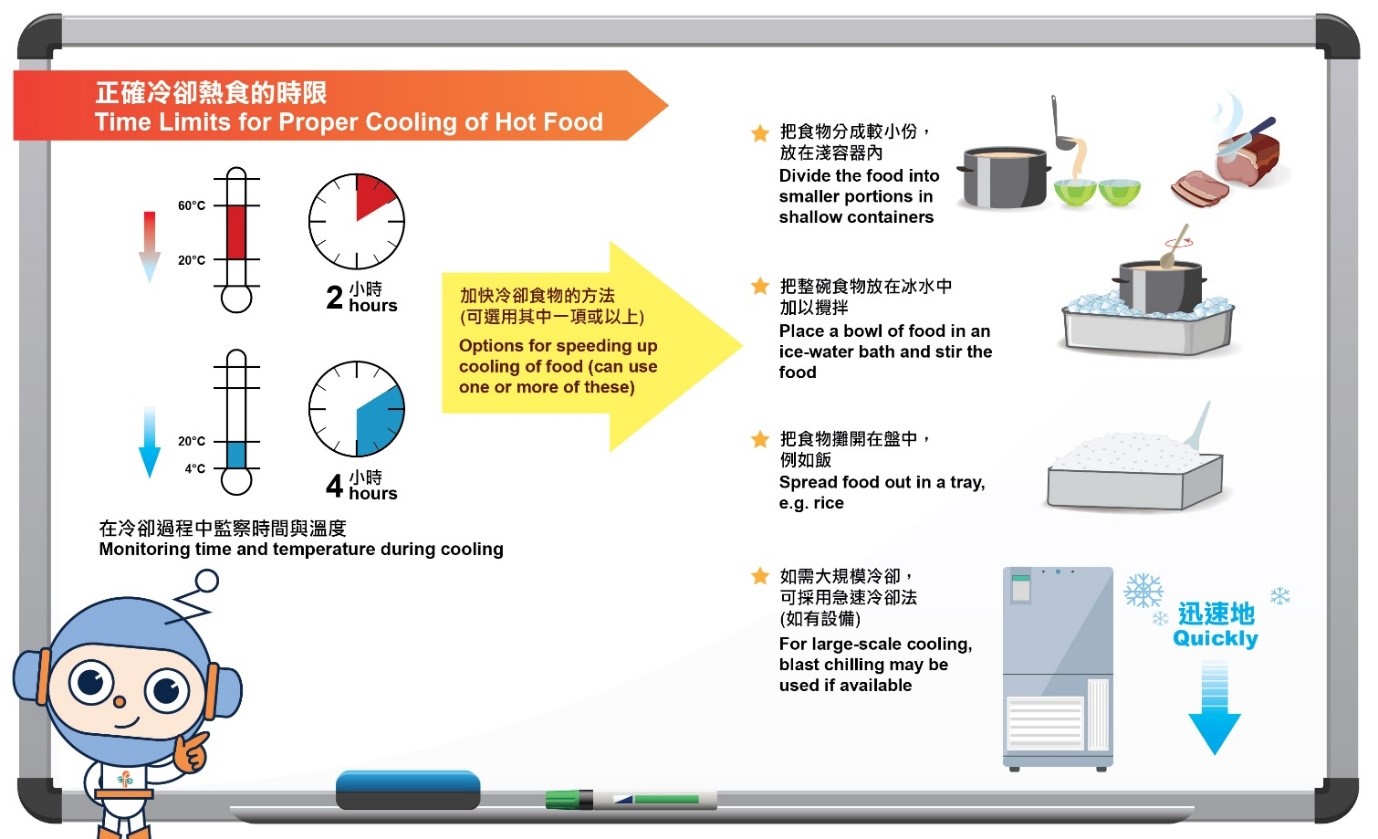
Figure 4. Safe cooling of freshly produced food after cooking
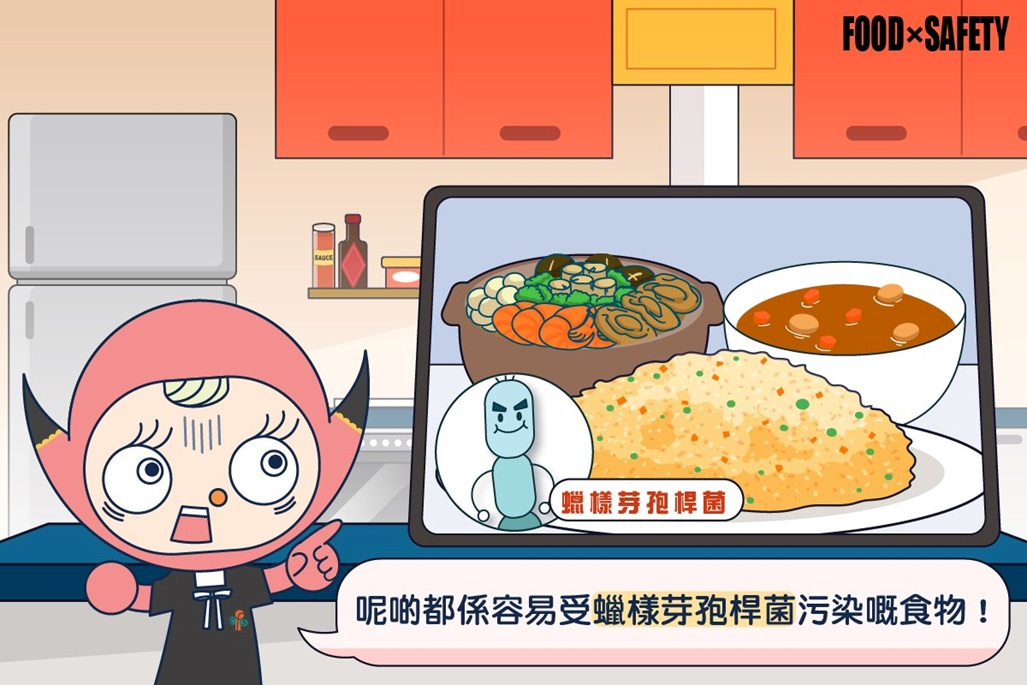
If chilled food is served hot later, it should be reheated thorougly until its core temperature reaches at least 75℃. However, it should not be reheated for more than once to avoid multiple exposures to dangerous temperature ranges.
Key Points to Note
- Cooking and reheating usually render food safe by killing bacteria, but improper handling and storage of food afterwards may allow B. cereus and S. aureus to form heat-stable toxins.
- The heat from cooking not only can induce the spores of B. cereus to germinate into vegetative cells, but also creates a favourable environment for the cells and contaminating S. aureus to grow by killing off other microbes.
- Cooked food not consumed immediately should be kept at temperatures over 60℃ or cooled down rapidly to prevent the growth of contaminating bacteria.
Advice to the Trade
✔ Carefully estimate the quantity of food required to prevent the running out of room for proper hot holding, cooling and refrigeration of food due to overproduction.
✔ Plan the production schedule ahead and avoid preparing food too early.
Safe Kitchen/Trade Talks/Food Safety Guidelines
Safe Kitchen
Introduction to "Safe Kitchen" Scheme
To facilitate the adoption of the "5 Keys to Food Safety" and good hygiene practices by trade members, and enhance food safety in their daily operation, the CFS has integrated the existing channels of risk communication and launched a new platform, namely "Safe Kitchen", to communicate with the trade. The platform provides food safety information of greater practical importance to meet the operational needs of catering outlets.
The "Safe Kitchen" platform disseminates up-to-date food safety information (including food safety guidelines and relevant legislative amendments) to the trade through a host of channels including WhatsApp, emails and dedicated websites. In response to food poisoning outbreaks in restaurants, the platform will also issue food alerts to remind the trade of the points to note in preventing future occurrences so that the risk of food poisoning can be minimised.
New dedicated websites and risk information exchange platforms will be rolled out under the "Safe Kitchen" Scheme. In addition, training materials tailor-made for the trade and workshops for kitchen staff will be provided to enhance food safety and hygiene awareness among them. Members of the trade are welcome to scan the QR code on the left to download the registration form for the "Safe Kitchen" Scheme in order to receive the latest food safety information in a timely manner.
Become a Professional Food Handler Today!
Poor hygiene not only damages a restaurant's reputation, but also is a risk factor for food poisoning, harming consumers and even causing legal litigation. Food handlers' compliance with the "5 Keys to Food Safety" and "Good Hygiene Practices" (GHPs) can help prevent food poisoning and ensure that the food is ultimately safe for consumers to eat. Ongoing training is an important element of GHPs. In order to enhance the awareness of food safety, food handlers, be they full-time, part-time or temporary staff, should be trained in food hygiene to a level appropriate to the operations they are to perform.
To this end, the CFS of the Food and Environmental Hygiene Department has launched the "Safe Kitchen" thematic webpage. Food premises are encouraged to provide regular training for food handlers to brush up and enhance their knowledge by utilising the resources on the webpage, thereby safeguarding food safety.
Nothing Difficult about "5 Keys to Food Safety" and GHPs
The topics covered by the webpage include (1) Food Hazards and Foodborne Diseases; (2) Personal Hygiene; (3) Safe Food Handling; and (4) Food Premises Sanitation. The "5 Keys to Food Safety" and GHPs are explained with illustrations aided by cartoons and video clips. Common mistakes are highlighted and explained in an easy-to-understand manner.
Food Hazards and Foodborne Diseases5 Keys to Food Safety
|
GHP
|
Visit the "Safe Kitchen" Thematic Webpage

Download "Food Safety Guide"

Watch "Safe Kitchen" Educational Video Clips

Food Safety Guidelines
1. The Harmful Substances in Food (Amendment) Regulation 2021: Regulation of Partially Hydrogenated Oils
Partially hydrogenated oils (PHOs) are the primary source of industrially-produced trans fatty acids (IP-TFAs), which are targeted for elimination from the global food chain by the World Health Organization.
PHOs were first introduced into food supply in the early 20th century as an economical replacement for oils and fats, including animal oils and fats with a high content of saturated fatty acids (SFAs) (e.g. butter, lard, beef tallow) and vegetable fats (e.g. cocoa butter). A vast range of PHO products have been developed through hydrogenation, an industrial process which modifies oils and fats to suit the desired applications in food production. By controlling the various elements in the process (types of oil, hydrogen pressures, temperatures, catalysts, etc.), a liquid oil is turned into a semi-solid or solid fat at room temperature.
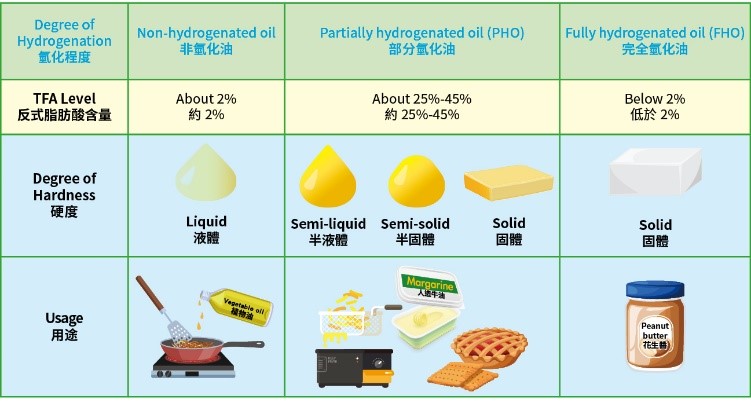
Modification of liquid oils with different degrees of hydrogenation (from partial to complete) produces fats of different hardness (from liquid to solid) for various applications. During hydrogenation, high levels of IP-TFAs (usually 25% to 45%) may result in PHOs.
During hydrogenation, double bonds in cis unsaturated fatty acids are partly converted into SFAs and partly into trans unsaturated fatty acids (i.e. TFAs). Incomplete hydrogenation (i.e. some unsaturated fatty acids remain in the oil) produces a liquid, semi-solid or solid PHO, whereas complete hydrogenation (i.e. all fatty acids are saturated) produces a waxy fat-like, fully hydrogenated oil at room temperature. The TFAs formed during hydrogenation can increase the melting point, shelf-life and flavour stability of the hydrogenated oil.
The versatile semi-solid to solid PHOs are used in the production of many foods, such as different forms of margarine soft to hard in texture, and compact or airy baked goods like biscuits and cakes. PHOs also help create layers in puff pastries and pies. They give cookies and potato chips a crispy mouthfeel. Solid PHOs can add shininess to doughnuts during deep-frying and prevent migration of liquid oil to their coatings and/or packages.
The Harmful Substances in Food (Amendment) Regulation 2021 (Amendment Regulation) expressly prohibits the import of any edible fats and oils containing PHOs and the sale of any food (including edible fats and oils) containing PHOs. Correspondingly, an amendment to the Food and Drugs (Composition and Labelling) Regulations (Cap. 132W) is also made through the Food and Drugs (Composition and Labelling) (Amendment) Regulation 2021 to stipulate the labelling requirements of hydrogenated oils in prepackaged foods.
The provisions of the Amendment Regulation relating to PHOs and the Food and Drugs (Composition and Labelling) (Amendment) Regulation 2021 will take effect on 1 December 2023. The other provisions of the Amendment Regulation will come into operation on 1 June 2023.
The Guidelines on the Harmful Substances in Food (Amendment) Regulation 2021 has been uploaded to the CFS website. It aims to assist the trade in having a better understanding of and complying with the relevant requirements under the Amendment Regulation and the Food and Drugs (Composition and Labelling) (Amendment) Regulation 2021, and to answer frequently asked questions.
The Guidelines on the Harmful Substances in Food (Amendment) Regulation 2021:
https://www.cfs.gov.hk/english/whatsnew/whatsnew_fstr/files/Combined_Guideline.pdf 
2. Food Safety Guidelines on Sandwiches
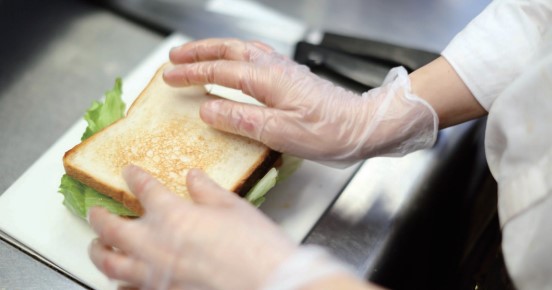
Sandwiches are considered a high-risk food due to the possible presence of disease-causing bacteria (e.g. Salmonella and Listeria monocytogenes) in some ingredients like eggs, salad dressings/spreads, sliced deli meats and fresh ready-to-eat vegetables. Improper handling and storage of sandwiches will lead to the growth of such bacteria. Besides, sandwiches may be contaminated with bacteria such as Staphylococcus aureus from human skin and other microorganisms with antimicrobial resistance ("superbugs") because the preparation of sandwiches often involves manual handling of ready-to-eat ingredients.
Common Food Safety Problems Related to Sandwiches
Contamination of ingredients due to inadequate washing or cooking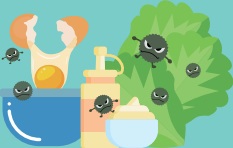
- Unpasteurised raw eggs are not cooked to a temperature of 75℃ to kill bacteria, or they are used to make a spread without adequate heat treatment beforehand
- Ready-to-eat raw vegetables are not thoroughly washed prior to use
Cross-contamination of food during preparation or packing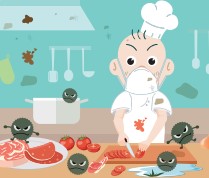
- Food handlers handle cooked or ready-to-eat food without washing hands or changing gloves after touching raw ingredients
- The same utensil, such as knife and chopping board, is used to handle both raw and ready-to-eat or cooked ingredients
Bacterial growth due to improper storage temperature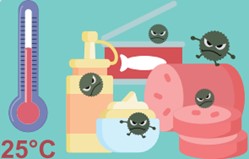
- Perishable ready-to-eat ingredients like egg-containing salad dressings/spreads and opened canned tuna fish are not stored in the refrigerator
- Prepackaged sandwiches are not refrigerated during display
To prepare safe sandwiches, food handlers should follow the "5 Keys to Food Safety" in daily operation, and ensure food safety in terms of purchase and receiving; preparation; transportation, distribution and display; and personal hygiene.

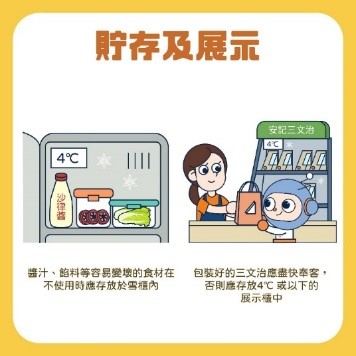

"Sandwiches – Food Safety Guidelines for Food Businesses", which has been uploaded to the CFS website, is available at the following address:
https://www.cfs.gov.hk/english/multimedia/multimedia_pub/files/sandwiches.pdf 
News on CFS
1. Workshop on Sodium Content in Dim Sum
To assist the trade in reducing the sodium levels in dim sum, the CFS organised a workshop on 5 August 2022 to explain the findings of the risk assessment study on the sodium (salt) content of local non-prepackaged dim sum, and introduce its Trade Guidelines for Reducing Sodium in Foods. The trade was also advised to lower the sodium levels in dim sum further through reformulation and serving sauces separately.

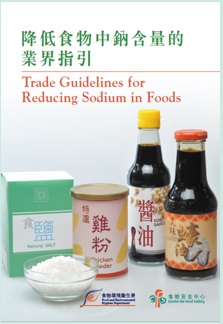
For details, please visit the following webpage:
https://www.cfs.gov.hk/english/multimedia/multimedia_pub/multimedia_pub_fsf_193_03.html
2. Trade Consultation Forum
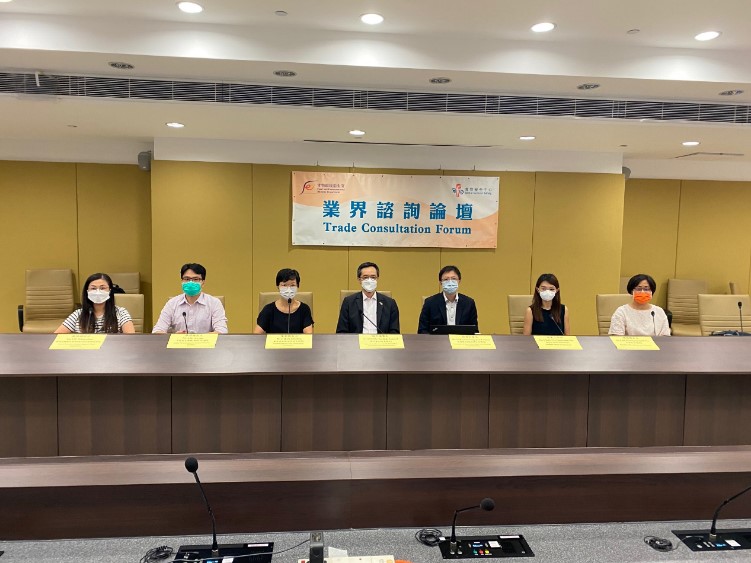
The 77th meeting of the Trade Consultation Forum was held on 30 June 2022. Topics discussed included "New Arrangement for Import of Frozen/Chilled Poultry via Hong Kong-Zhuhai-Macau Bridge", "Food Traders' Registration", "Trade Guidelines on Safe Preparation of Beef Burgers" and "Guidelines for Food Businesses on Providing Consumer Advice on High-risk Food on Menus".
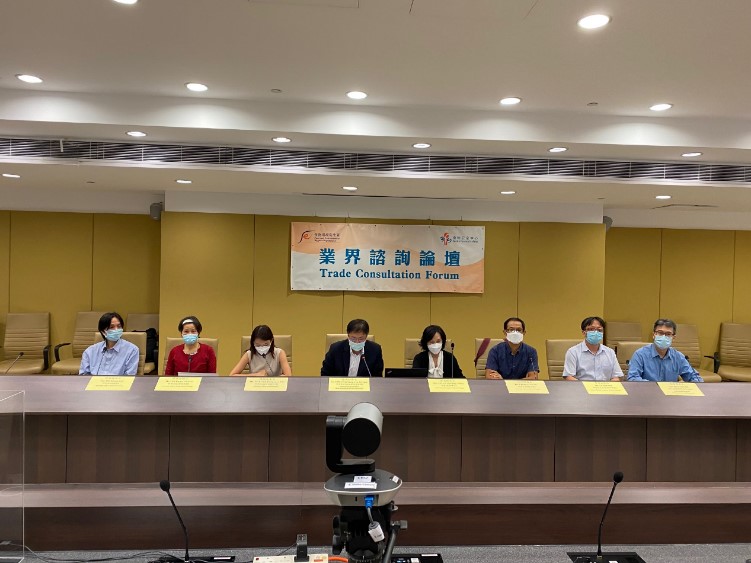
The 78th meeting of the Trade Consultation Forum was held on 16 September 2022. The topics discussed included "3-MCPDE and Glycidyl Esters in Food", "The Harmful Substances in Food (Amendment) Regulation 2021: Regulation of PHOs", "Sodium Content in Dim Sum", "Legible Food Labels" and "Updates on Food Safety Guidelines on Sandwiches for Food Businesses".
Please visit the thematic webpage of the Trade Consultation Forum for details:
https://www.cfs.gov.hk/english/committee/committee_tcf.html
3. Webinar on the "Practical Guide on Take-away Meals and Meal Delivery Services"
In recent years, food ordering apps have become increasingly popular. Whether deliveries are made by restaurant staff or third-party food delivery agents, take-away meals must be handled properly during door-to-door delivery for the sake of food safety. In view of this, the CFS has compiled the "Takeaways and Meal Delivery: Food Safety Advice for Food Businesses and Consumers" (the Advice), aiming to highlight the key points of food safety training for food handlers involved in takeaways and meal delivery. In addition, the CFS and the Licensing Section of the Food and Environmental Hygiene Department organised a webinar on the "Practical Guide on Take-away Meals and Meal Delivery Services" (the Guide) for the trade on 14 November 2022, during which Mr CHEUNG Kwok-leung, Eric, Coordinator (Licensing Review), Mr WONG Wai-nang, Superintendent (Licensing), Dr Mang Chun-yu, Jerry, Head (Risk Communication) and Ms CHENG Kei-wai, Amy, Research Officer (Risk Communication) briefed participants on the Guide and the Advice. For details of the Advice, please visit the following website.
"Takeaways and Meal Delivery Food Safety Advice for Food Businesses and Consumers"
Chinese Version:![]()
(https://www.cfs.gov.hk/tc_chi/multimedia/multimedia_pub/files/5-takeaways.pdf)
English Version:
(https://www.cfs.gov.hk/english/multimedia/multimedia_pub/files/5-takeaways.pdf)
4. Food Trade to Receive Food Safety Messages by WhatsApp
To facilitate the food trade in receiving food safety information in a fast and convenient way, the CFS has launched a new channel to disseminate food safety messages to food trade members using the WhatsApp broadcasting function. Food practitioners are welcome to register for the programme.
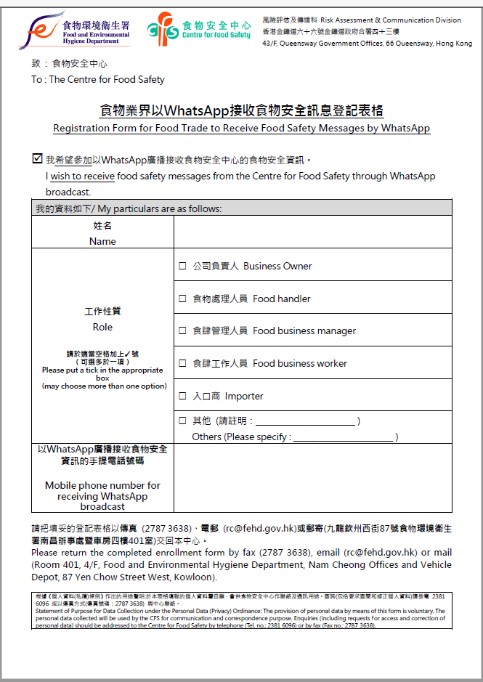
The registration form can be downloaded from the following webpage:
https://www.cfs.gov.hk/english/multimedia/multimedia_pub
/files/Receiving_Food_Safety_Messages_through_WhatsApp_Broadcast.pdf
Ask Our Mascots
Dispelling Food Safety Myths – Seeking Redress for "Freezer-burnt" Meat
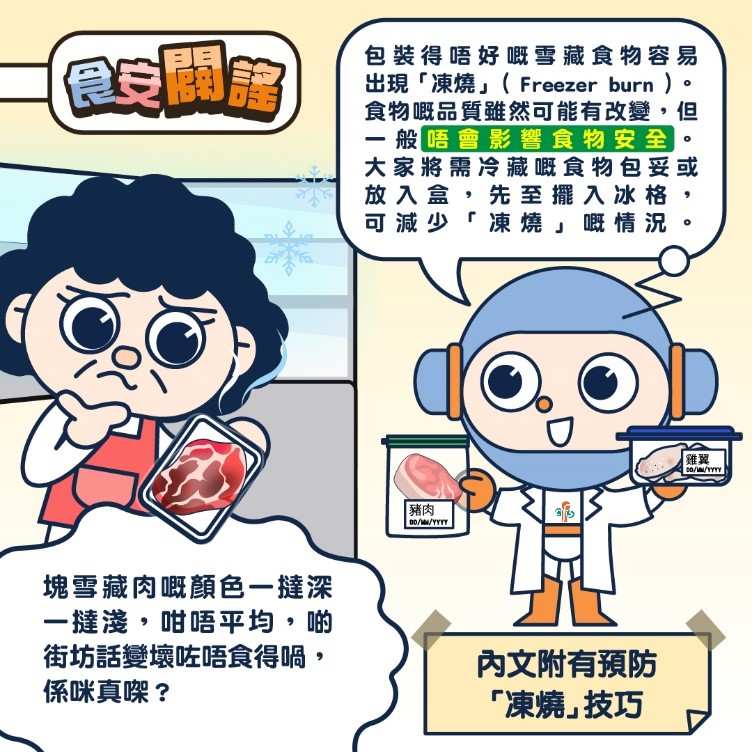
#Auntie TONG: How come this piece of frozen meat is covered in dark-coloured patches and ice crystals? I've heard some people in the neighbourhood saying that such meat has been spoiled and should not be eaten. They also say that the whole piece of meat has to be thrown away. Is this true?
#Mascot ON: Well, it's not necessary. This piece of meat has shown signs of "freezer burn" only. If frozen food stored in the freezer is not wrapped properly, some parts of it may become tough, shriveled, discoloured, or covered in ice crystals, which, normally, will only affect food quality but not safety. That said, consumers may remove the "freezer burnt" parts before or after cooking as desired.
#Mascot MUI: Here are some tips on preventing "freezer burn" on food:
- Mare sure food is wrapped properly before freezing by putting it in a zipper bag or an airtight container
- If a zipper bag is used, squeeze out excess air before sealing
- Label the package with the food name and expiry date before freezing
- Consume the frozen food within the storage time recommended by the manufacturer
As for hot food, always remember to allow it to cool before freezing. Fancy knowing more about the proper ways of handling frozen food? Browse the following webpage at once!
https://www.cfs.gov.hk/english/multimedia/multimedia_pub/multimedia_pub_fsf_190_02.html
Knowledge Improvement Quiz
- Which of the following practice cannot prevent bacteria like Bacillus cereus and Staphylococcus aureus from producing heat-stable toxins?
- Cover hand wounds with waterproof adhesive dressings
- Always keep food preparation areas clean
- Allow prepared food not for immediate consumption to cool at room temperature
- When will the Harmful Substances in Food (Amendment) Regulation 2021 and the Food and Drugs (Composition and Labelling) (Amendment) Regulation 2021 come into operation?
- 11 December 2022
- 1 February 2023
- 1 December 2023
- Which of the following about pasteurised foods is correct?
- They should be refrigerated at or below 4°C
- They should be eaten as soon as possible once opened
- Their expiry dates should be checked before consumption
- All of the above
Answers:
1. C 2. C 3. D
Diary of Mascot ON
Be a "Time Management Master" in the Food Industry
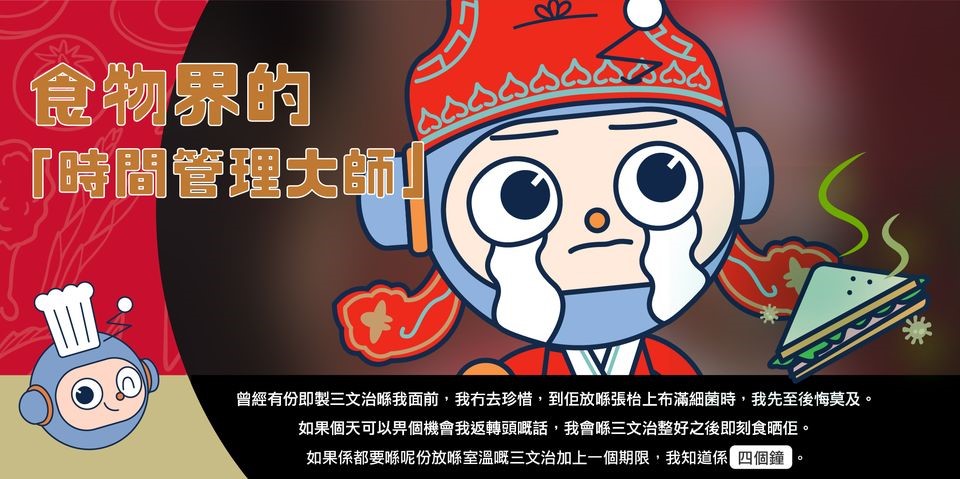
#Mascot ON: There was once a made-to-order sandwich placed in front of me but I did not cherish it. It's too late for regrets when it, lying on a table, was heavily contaminated with bacteria. If I were given a second chance, I would have finished the sandwich as soon as possible after it was made. And if I were to assign an expiry date to this sandwich, which was stored at room temperature, I know it should have been 4 hours.
#Mascot MUI: I've taken pains to make the sandwich for you. You were so absorbed in video games that you didn't eat it! It has been very hot recently, perishable foods storing at room temperature are prone to bacteria growth!
The consumption of food immediately after preparation is certainly the safest, otherwise follow the "2-hour/4-hour rule".
According to the "2-hour/4-hour rule", if prepared food:
- has been placed at room temperature for less than 2 hours, it should be finished immediately or stored in the fridge
- has been placed at room temperature for a duration of 2 to 4 hours, it can be eaten but should not be returned to the refrigerator
- has been placed at room temperature for more than 4 hours, it should not be eaten or used
